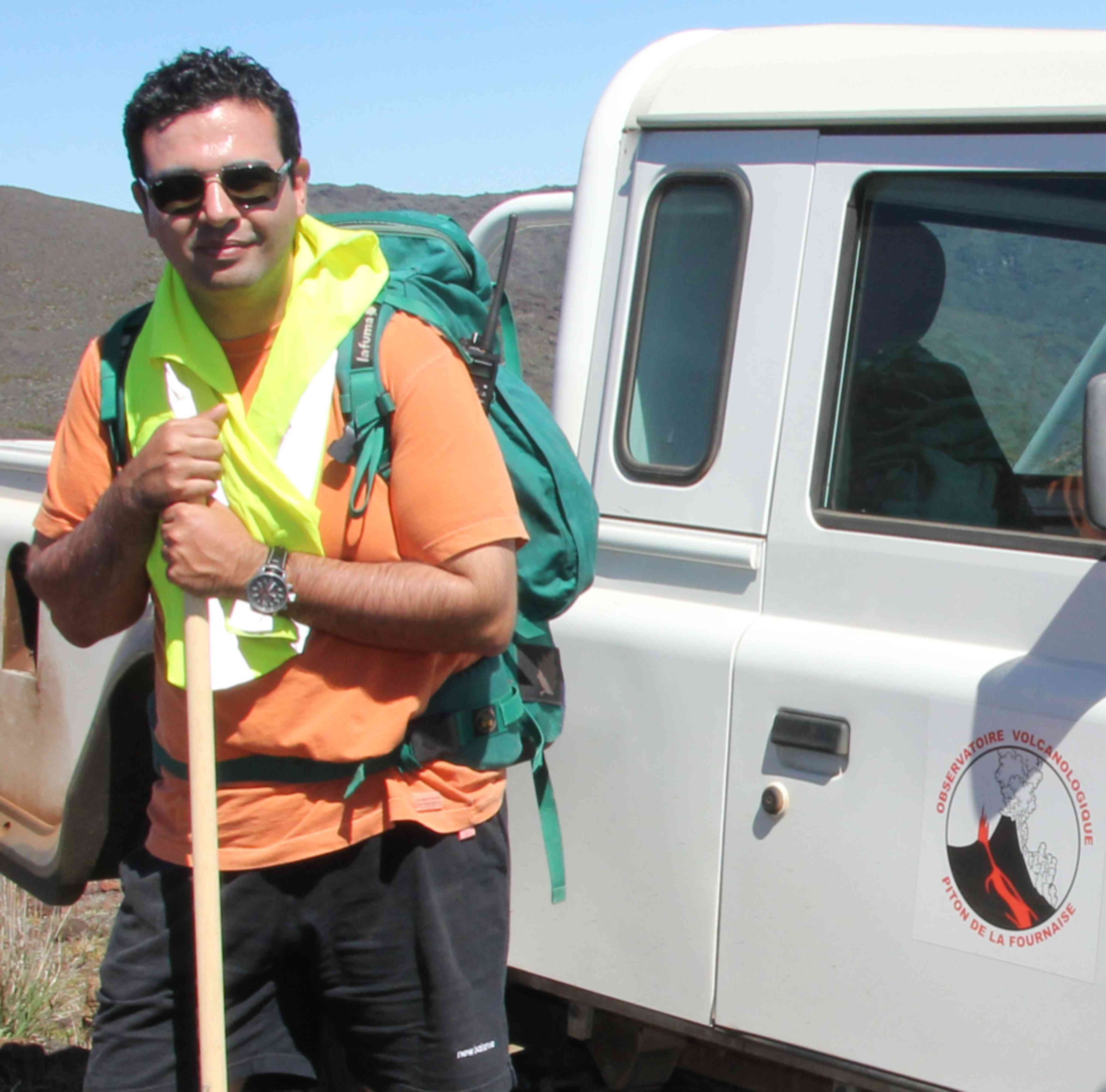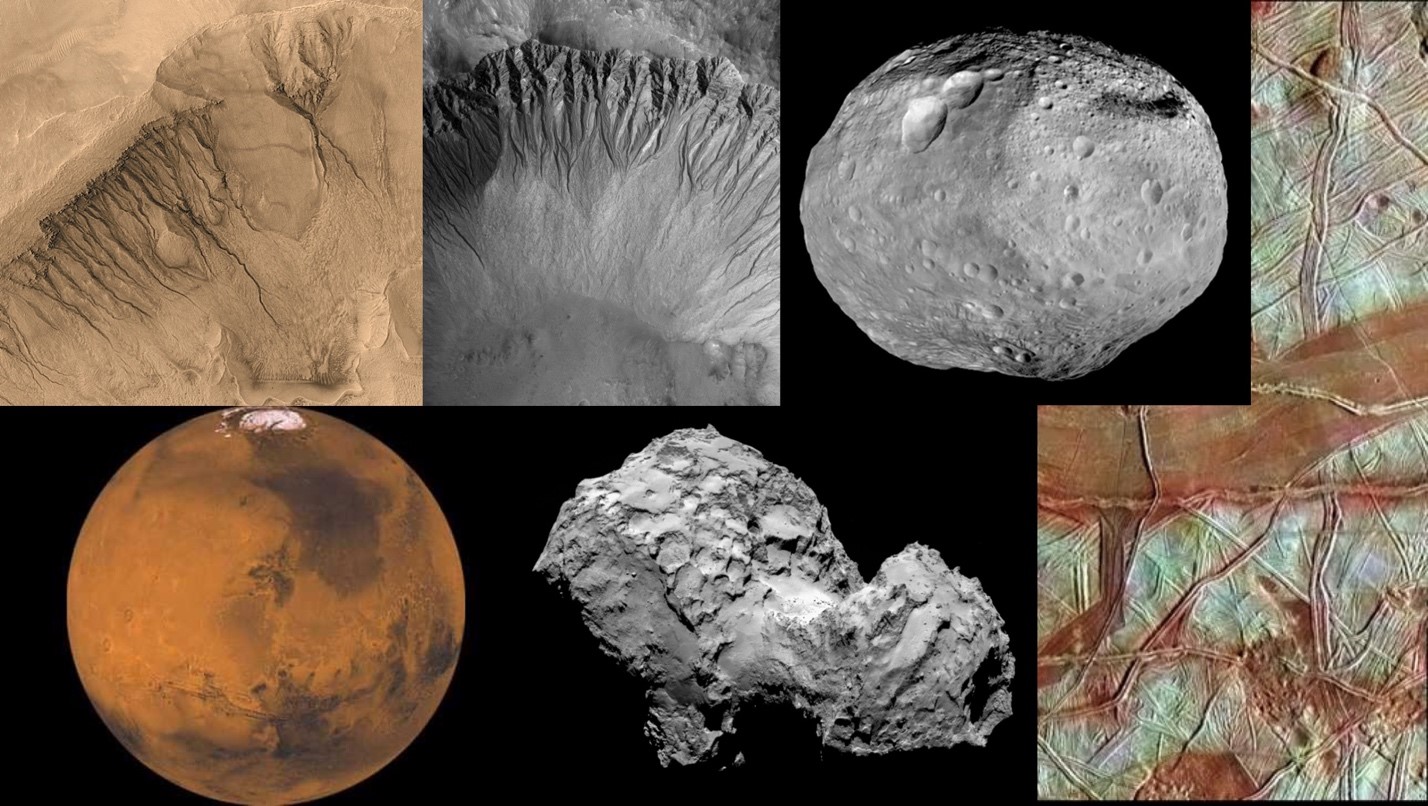Water Hunt from Space Missions to the North African Sahara

By Dr. Essam Heggy University of Southern California, NASA Jet Propulsion Laboratory |
GSAf seminar series
Date: 25 September 2020 14:00 (GMT) 15:00 Nigeria and Morocco time, 16:00 Egypt and South Africa time Online Seminar
Share the event on your social media by copying the link of the current page or downloading and sharing the seminar poster |
| Essam Heggy is a Planetary Scientist at the Viterbi School of Engineering in the University of Southern California and a ROSETTA Co-Investigator at the NASA Jet Propulsion Laboratory. Heggy obtained both Master and PhD in Astronomy and Astrophysics with a major in Space and Planetary sciences respectively in 1999 and 2002 with distinguished honours from the Sorbonne-UPMC Paris University in France. His research interests in space and planetary geophysics aims to understand water and ice distributions in Earth arid regions, Mars, the Moon, Icy satellites and Near-Earth Objects. His research involves probing structural, hydrological and volcanic elements in terrestrial and planetary environments using different types of radar imaging and sounding techniques as well as measuring the electromagnetic properties of rocks in the radar frequency range. He is currently a member of the science team of the MARSIS instrument aboard the Mars Express Orbiter, the Mini-SAR experiment aboard Chandrayaan-1, the Mini-RF experiment on board the Lunar Reconnaissance Orbiter, the CONSERT radar experiment on board the Rosetta mission and the WISDOM Radar onboard the ESA ExoMars Rover planed for 2020. He is also a contributing scientist to several proposed planetary and terrestrial radar imaging and soundings experiments and participated in several NASA radar mission concept designs. Dr. Heggy is also an Associate Professor at the Institute de Physique du Globe de Paris, Paris, France. |
Water on Mars, on Jupiter Icy Moons, on Asteroids and perhaps even more water on more bodies of our solar system — Are water and life unique to Earth? The last decade of planetary exploration suggests that the liquid water, uniquely characterizing, our blue planet is potentially a transitional phase that other bodies of our solar system may have gone through or will be transiting to during their evolution. On Earth, as well as other bodies of the solar system, the evidence of water and climatic evolutions are often found in the first few kilometers of the subsurface. Today, planetary sounding and imaging techniques have provided new insights into understanding the unseen evolution history of the Earth, Moon, Venus, Mercury, comets and Mars—as well as numerous other bodies in our solar system hunting traces of water and ice and exploring new habitable environments. The returned data reveals the similarities and discrepancies between our planets and the other bodies of the solar system. In this lecture dedicated to the general audience, Dr. Heggy will speak about how sounding methods are being used to explore evidences of possible deep subsurface aquifers and ice deposits on Mars, asteroids and comets and how these methods are being used to understand the evolution of groundwater recourses in North Africa and the Arabian Peninsula and their responses to climatic and anthropogenic stresses. The lecture will also discuss the uncertainty and the evolution of water shortage in the Middle East and its implications on the stability of the area for the upcoming few decades.
|


